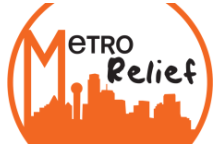Metro Relief is a mobile outreach engaging in relationship and relief to combat homelessness and hunger. Since starting its operation, the Metro Relief Bus has become a mobile nexus for the homeless community, providing essential support to help people get off the streets. We retrofit school buses into mobile resources centers that do directly to those in our community who are most vulnerable, lonely, and hurt. Week after week, rain or shine, the Metro Relief Bus meets the homeless right ... 閱讀全文
Metro Relief is a mobile outreach engaging in relationship and relief to combat homelessness and hunger. Since starting its operation, the Metro Relief Bus has become a mobile nexus for the homeless community, providing essential support to help people get off the streets. We retrofit school buses into mobile resources centers that do directly to those in our community who are most vulnerable, lonely, and hurt. Week after week, rain or shine, the Metro Relief Bus meets the homeless right on sidewalks, under bridges and outside of shelters with one simple message: “We love you. You are not alone. Tomorrow can be better day.” We provide meals, new socks, toiletries, and much needed connections to community resources on each of our inner-city outreaches. In 2016 alone, over 18,000 points of contact were made with homeless individuals, all with the goal to offer hope and a way out.
Forging healthy relationships is critical to our work. The road to homelessness is typically a long one, filled with many broken ties. Getting back off the streets demands that people rediscover how to connect with others. One reason our mobile resource center has been so successful is that we consistently show up in the same places each week to build trusting relationships based on unconditional positive regard. People know they can count on the Metro Relief Bus as a reliable source of aid and relief. They can depend on our staff as a source of support and encouragement. Consistency is key to building strong relationships with the homeless community; these relationships then become critical to helping people connect with other available resources.
隱藏全文
